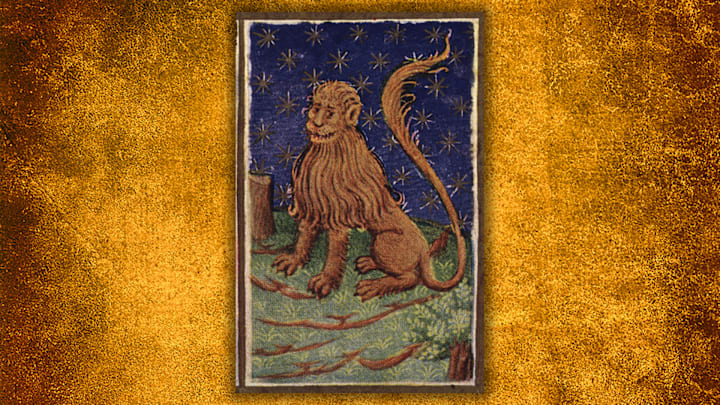Several strange creatures lurk within the pages of medieval books. But perhaps none are more disturbing than the lions.
Lions were a symbol of strength and sovereignty for the Roman Empire, and popped up in European cultures for many years to come. Images of the big cats were fairly common during the medieval period, in which lion iconography became a ubiquitous part of visual culture across the continent: They appeared in everything ranging from manuscripts and paintings to heraldry and fabric designed to protect horses. The French historian Jean Dufournet even stated that “the lion is everywhere” during the 12th century.
But just because the felines were depicted frequently in medieval art and design doesn’t mean they were depicted well.

Many medieval representations of lions had little resemblance to the actual animals. Some disturbing illustrations showed them with faces more akin to humans or other animals. Other notably unsettling examples include a grimacing (and emaciated) beast helping Saint Jerome; a lion in surreal shades of red with human-like teeth; and a maned cat with wings. Lions were even sometimes portrayed playing musical instruments.
Why were these lions so strange? One of the reasons is that many medieval Europeans simply did not have the opportunity to see a real one for themselves. Though the animals had once lived on parts of the continent, they were extirpated in Europe by the time the Middle Ages rolled around. Many of the lions that were brought to the area in medieval times were treated as diplomatic gifts for the wealthy and powerful and were kept in captivity behind closed doors. Most ordinary citizens would have had no access to these creatures, so artists could only refer to other artists’ images of the big cats.

It doesn’t help that medieval artists typically weren’t concerned with realism. Images of lions were often found in bestiaries, which were manuscripts that collected descriptions of animals. Lions usually appeared first. As a one bestiary put it, “Now leo in Greek is translated to ‘king’ (rex) in Latin, because he is the ruler of all beasts.”
Lions had pride of place for a reason. Bestiaries had another goal beyond mere descriptions of the world’s fauna: They also aimed to illustrate religious ideas about animals and what their behavior suggested about the way some believed society should be organized. According to their lore, lions were often linked with Christ. The symbolic aspects of lions were therefore as important for the artists as their actual physical features.

Instead of dismissing medieval lions for their lack of realism, it’s best to just appreciate the light they shed on the cultural ideas of their era—and enjoy the quirkiness of their unusual but entertaining appearances.
